Nobody has time to sit on Facebook all day. Yet, your brand needs a consistent social media presence.
You could always have your office intern sit and post frivolous tweets whenever the moment seems right. But this is hardly an effective way of reaching your audience when they’re most tuned in.
Instead, you need to build a robust schedule that uses social analytics to target moments of high engagement. This doesn’t need to be hard if you know what you’re doing.
In this article, we will provide you with a guide to making social media scheduling easier.
The benefits of social media scheduling
Social media scheduling refers to all the activities involved in planning out your social media content calendar so that your posts launch at particular times.
By scheduling effectively, you can take advantage of key engagement times to target your customers when they’re most active.
But that’s not the only benefit.
You’ll find that with a schedule in place, you can build a silo of social media posts, so you’re not racing to get the next one ready.
Also, by planning your social media schedule, you can strategize time-sensitive content, such as posts for product launches, holidays, and events.
Not only does this mean you get social content out on time, it also means you have time to research what works to create more intelligent campaigns.
You’ll also have plenty of time to change the campaign if updates or alterations gum up the works.
Perhaps most importantly, planning your social media schedule in advance makes it easier to create a cross-channel social media strategy where you’re posting regularly on each social platform. After all, consistency pushes conversions up 33%.
Overall, social media scheduling helps you to gain better control over your posting. You can more easily track engagement on each campaign to plan better for the next cycle based on what works and what doesn’t.
When you’re rushing to release any old social content simply to keep your social accounts updated, you’re not able to devise sophisticated campaigns that target specific, measurable goals.
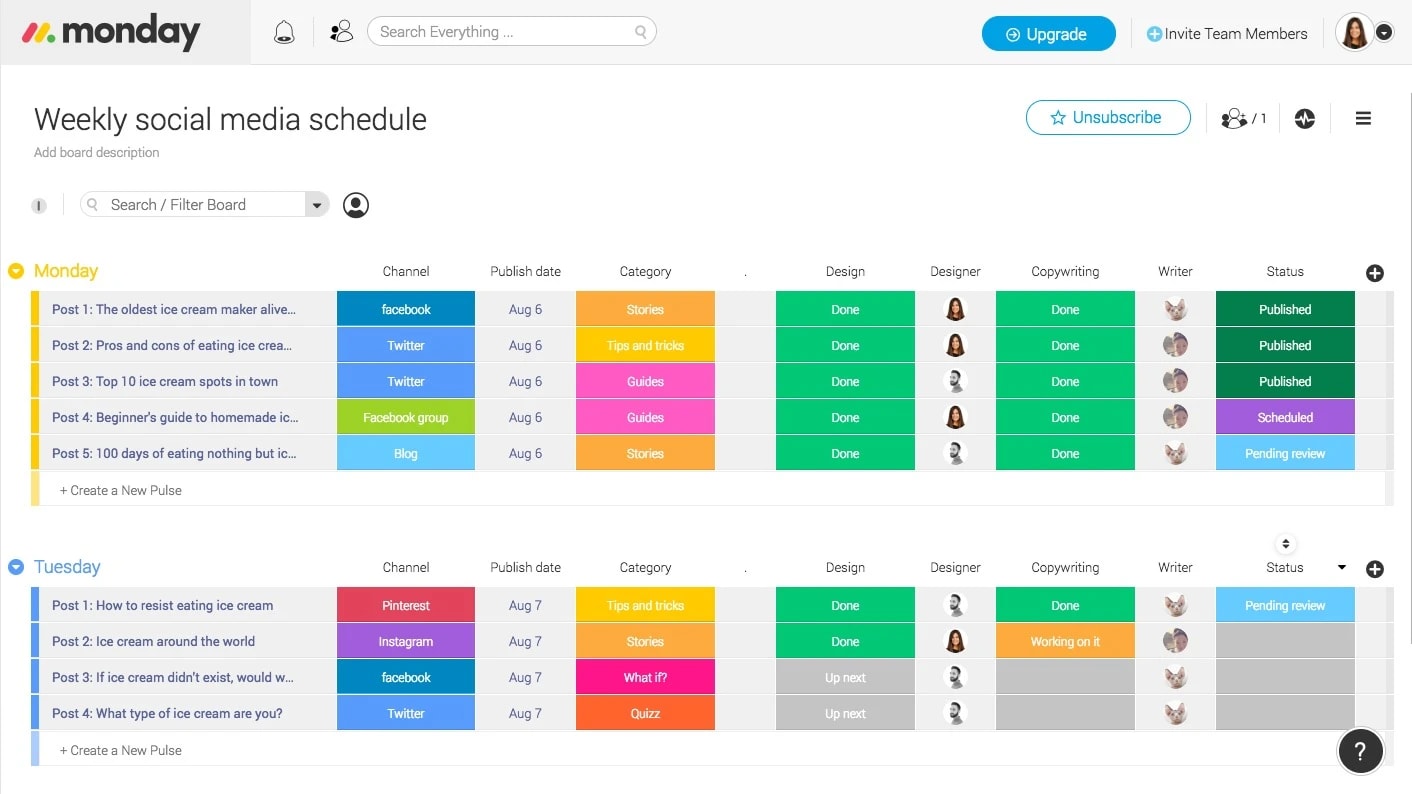
Plus, with a highly-visual social media scheduler, like the ones you can build on monday.com’s Work OS, everyone on the team is on the same page.
It’s easy to see what needs doing, what’s up next, and where campaigns are stuck.
How to create a social media schedule in 5 simple steps
With multiple platforms and varying audiences, social media can become a real headache if you’re not organized.
Here’s the straightforward way to create a social media schedule, so your multi-channel social strategy stays on track.
1. Audit your existing social channels
Take a look at each social media platform and note the key demographics of your social followings, the types of content that work, and the key engagement times.
This audit will help you to get a picture of what types of content you should make, the personas you should target, and when to share content on each social account.
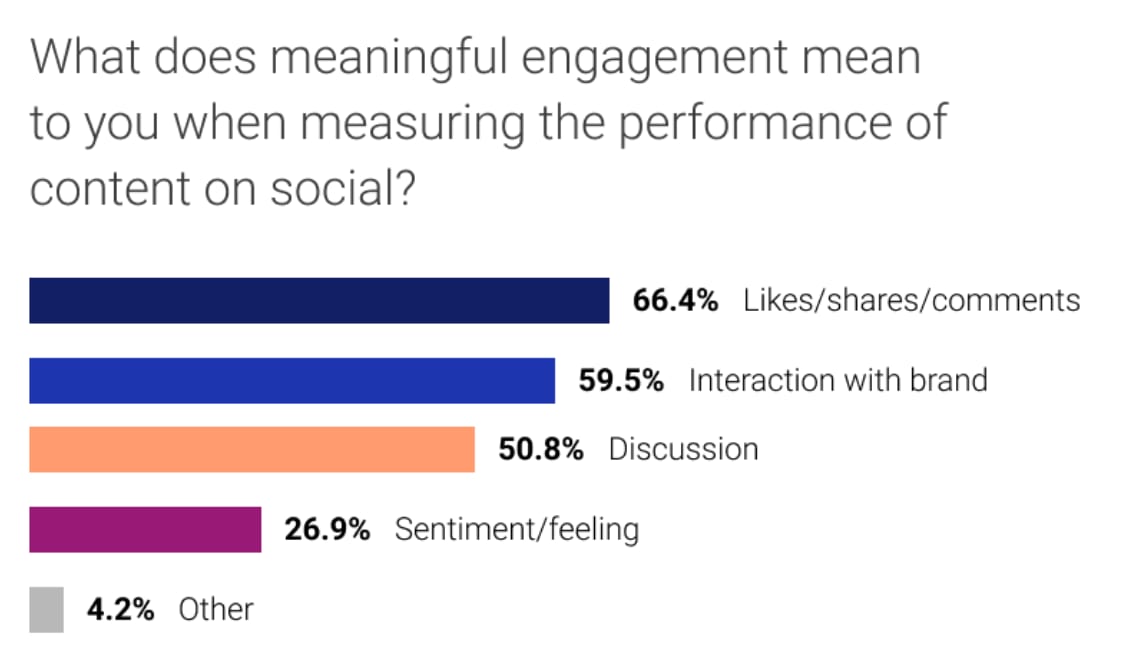
It’s important to define engagement metrics — how do you measure what’s effective?
For example, 2/3 of marketers measure shares, likes, and comments to judge meaningful engagement.
To understand what drives effective engagement for you, consider which types of engagement reach your social goals.
2. Look for social trends
You’ll also need to look beyond your accounts to understand what’s popular among your target demographic in the wider social world. This helps to shape future campaigns.
In a broad sense, ask yourself why your target persona uses social media to reach your content. 40% of Gen Z social media users are looking for entertaining content, while 36% of baby boomers are trying to stay updated on the news.

Another way to stay hot on current trends is to use social listening tactics. This is the process of monitoring social channels for mentions of your brand, products, competitors, key topics, industry trends, and more.
Currently, over half of marketers are using social listening to get quick information about their target audiences.
Social listening helps you to understand what’s going on in your brand’s landscape, so you can jump on these trends in time.
Use tools like Keyhole, Tailwind, and Mention to keep an eye on relevant keywords.
3. Work out when to post
You need to work out when the optimal posting times are for your brand.
Start by exploring the industry standard.
For example, Twitter typically has the highest engagement on Wednesday and Friday at 9 am. However, if you’re a tech firm, you’re better off posting on Tuesdays at 9 am.
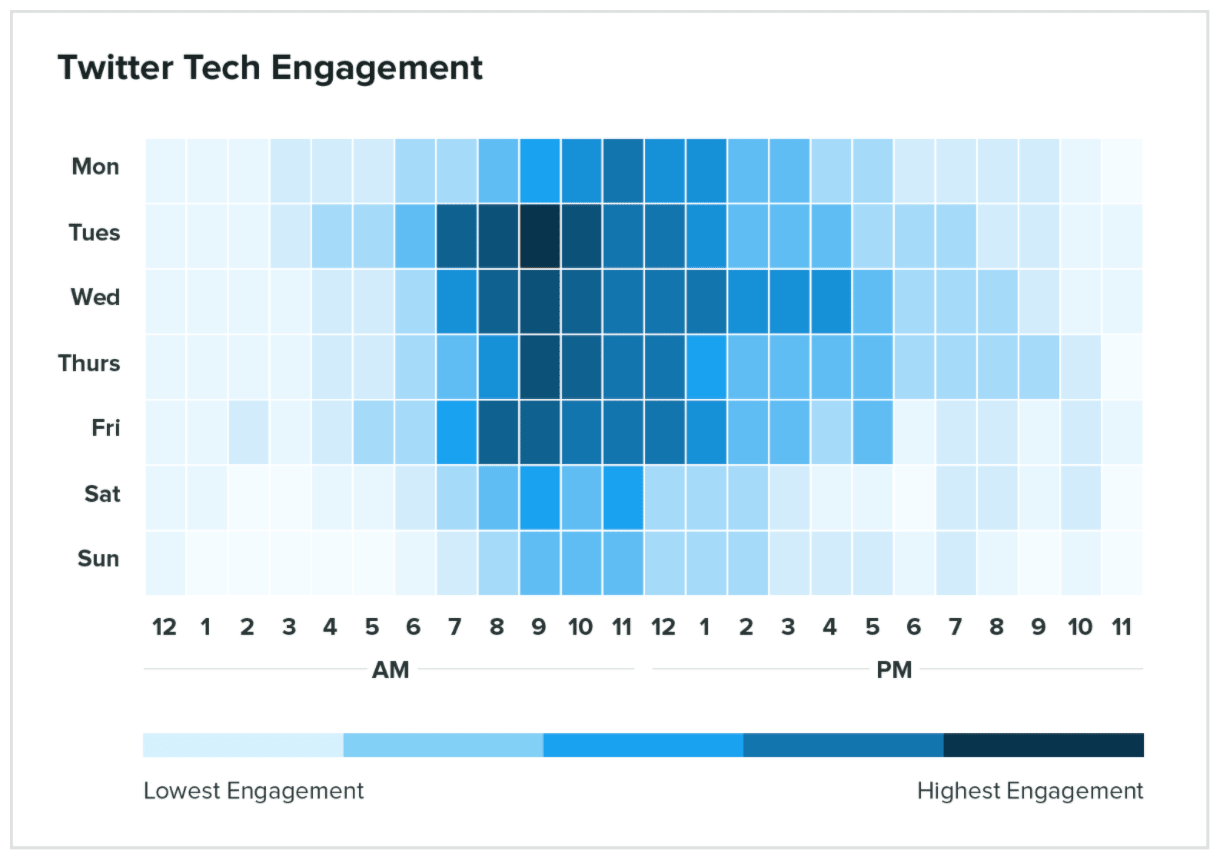
It’s important to do your own research, too.
You’ll need to test and monitor your campaigns to see when your engagement times are highest.
It’s also crucial to consider posting frequency.
You need consistent brand representation across each social media channel, but you don’t want to bombard your audience to the point where they will unfollow you.
On chronologically organized platforms like Twitter, it’s considered best practice to post as many times as you like, the more often the better.
However, with platforms like Facebook that curate posts for users’ feeds, you’ll be penalized if you’re releasing lots of posts that get low engagement. This indicates that your followers aren’t psyched by your barrage of posts.
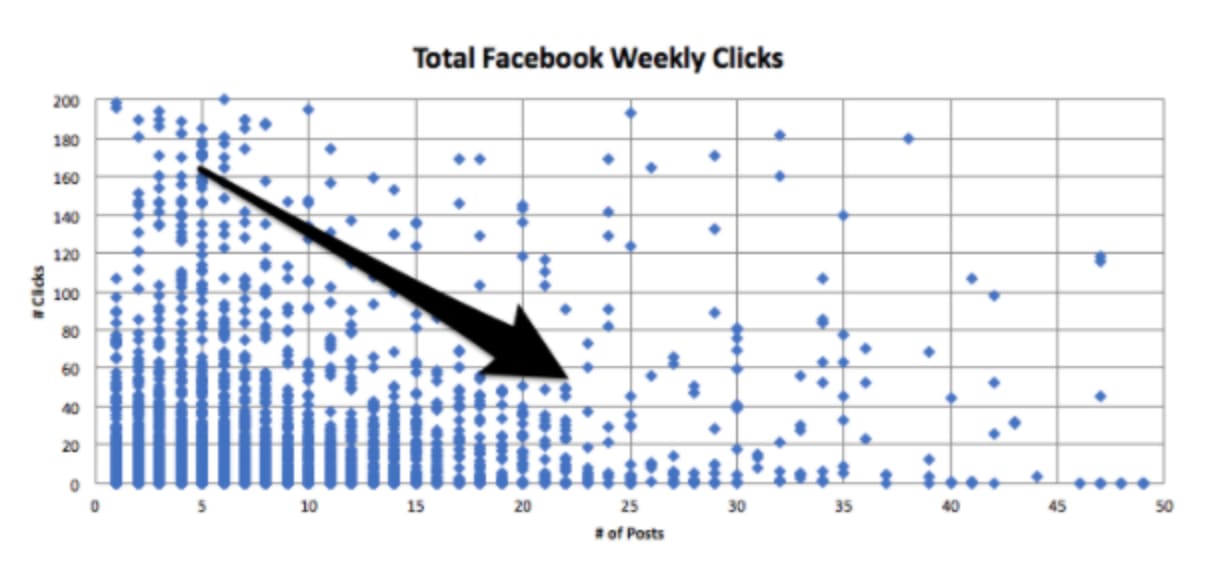
In this sense, it’s best to post between 2 and 5 times a week on Facebook.
4. Decide how much original content you need
Your content mix is important, as it not only reduces the pressure of creating entirely original posts, but sharing others’ content and giving something back will also help build credibility with your audience.
Not just that, but if your audience feels like they can stay up-to-date with all the top influencers in your industry by simply visiting your page, they won’t need to go elsewhere. They’ll just head straight to your social profile.
For best results, you want a good mix of relational content:
- Promotional content that shows off your products
- Educational content that teaches your audience something
- Influencer content that shows industry relevance
- Interactional content to encourage your users to engage
Leadership and productivity guru Michael Hyatt suggests the 20-to-1 rule: “it means that you have to make 20 relational deposits for every marketing withdrawal[…]. I have observed that if you just keep asking people to do something — buy your book, come to our conference, sign up for your cause — without making adequate deposits, they will begin ignoring you. Eventually, they will unfollow you and disconnect from your updates.”
5. Pick a scheduling tool
When you have multiple accounts to balance, it can be hard to stay organized without a highly-visual social media scheduler that keeps your whole team on the same page.
Look for a social media tool that helps you to plan upcoming content and tracks campaign progress. Progress-tracking helps you to identify any bottlenecks in the production process, so your schedule isn’t delayed.

Your social media scheduling tool should aid collaboration and communication by acting as a centralized place to collate all conversations and documentation related to each campaign.
You may also want to consider a tool that enables you to schedule content to automatically release at a set time. This way scheduling social media posts is easier and takes less time off your schedule.
Social publishing tools are super useful for publishing on a global calendar and reducing administration — that’s why 84% of B2C companies use these tools.
Not sure which tool to use? monday.com’s Social Media Schedule is ideal for handling the job.
How to use monday.com as a social media scheduling tool
It’s no good having a static social media marketing schedule. You might as well write it on your cat-themed desk calendar.
monday.com’s Work OS enables you to build a dynamic social media scheduling platform to manage the whole scheduling process, from analytics to strategy to execution.Here’s how.
1. Deep dive into your social media analytics
If you want to audit each social profile to discover what’s working, use monday.com’s Social Media Metrics template.
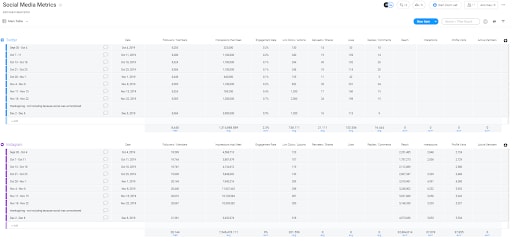
Simply export your social analytics data and upload it to the template, then integrate your Facebook Ads account.
That way, you’ll be able to identify patterns in engagement and demographics by creating charts to flag posts that worked best.
2. Build a highly-visible social media schedule
If you’re looking to get started with a social media content calendar right away, try monday.com’s Social Media Calendar template.
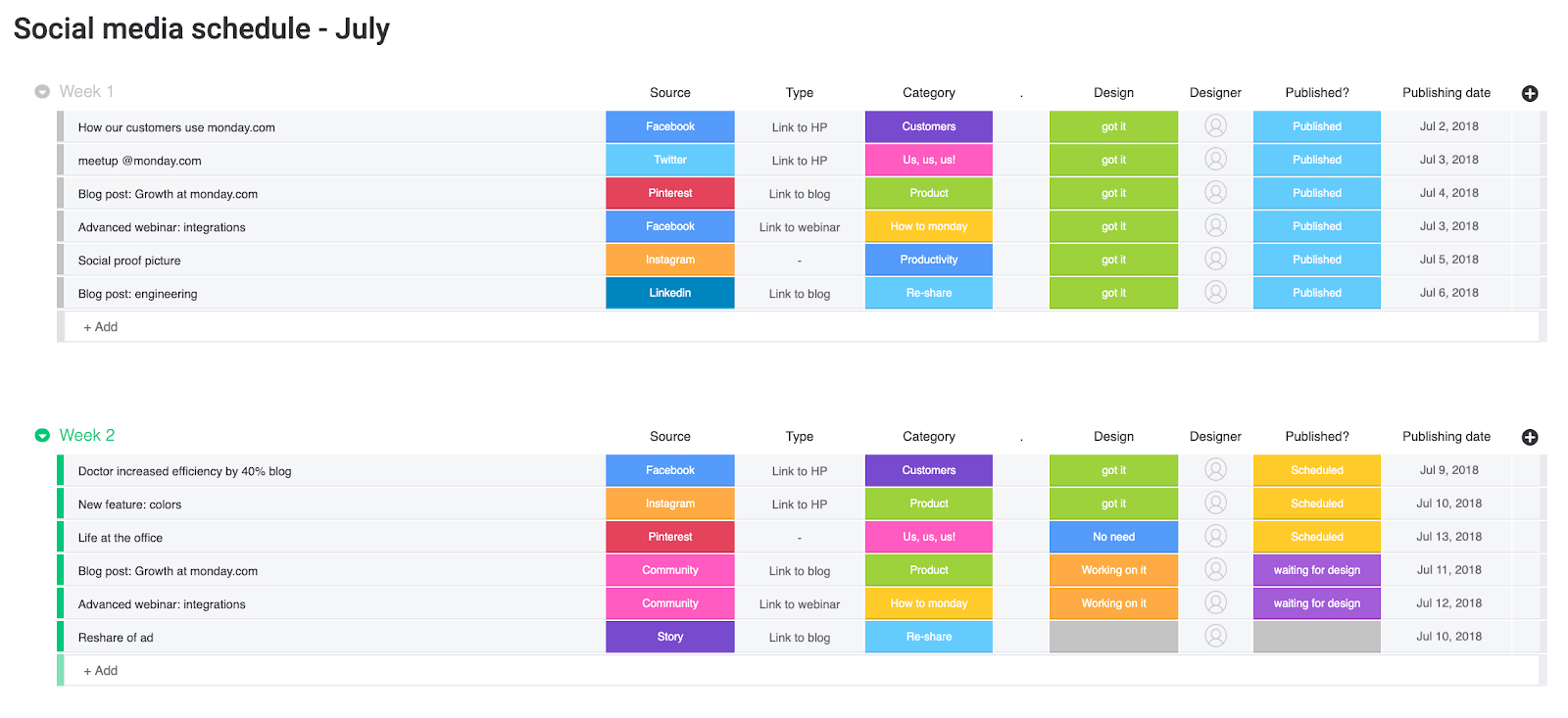
This highly-visual tool makes it easy to build out high-and low-level campaigns, assign tasks, and monitor progress.
Not only that, but you can also keep all documentation and communication in one centralized place.
3. Automate social media marketing
monday.com’s Work OS makes it easy to automate social media publishing.
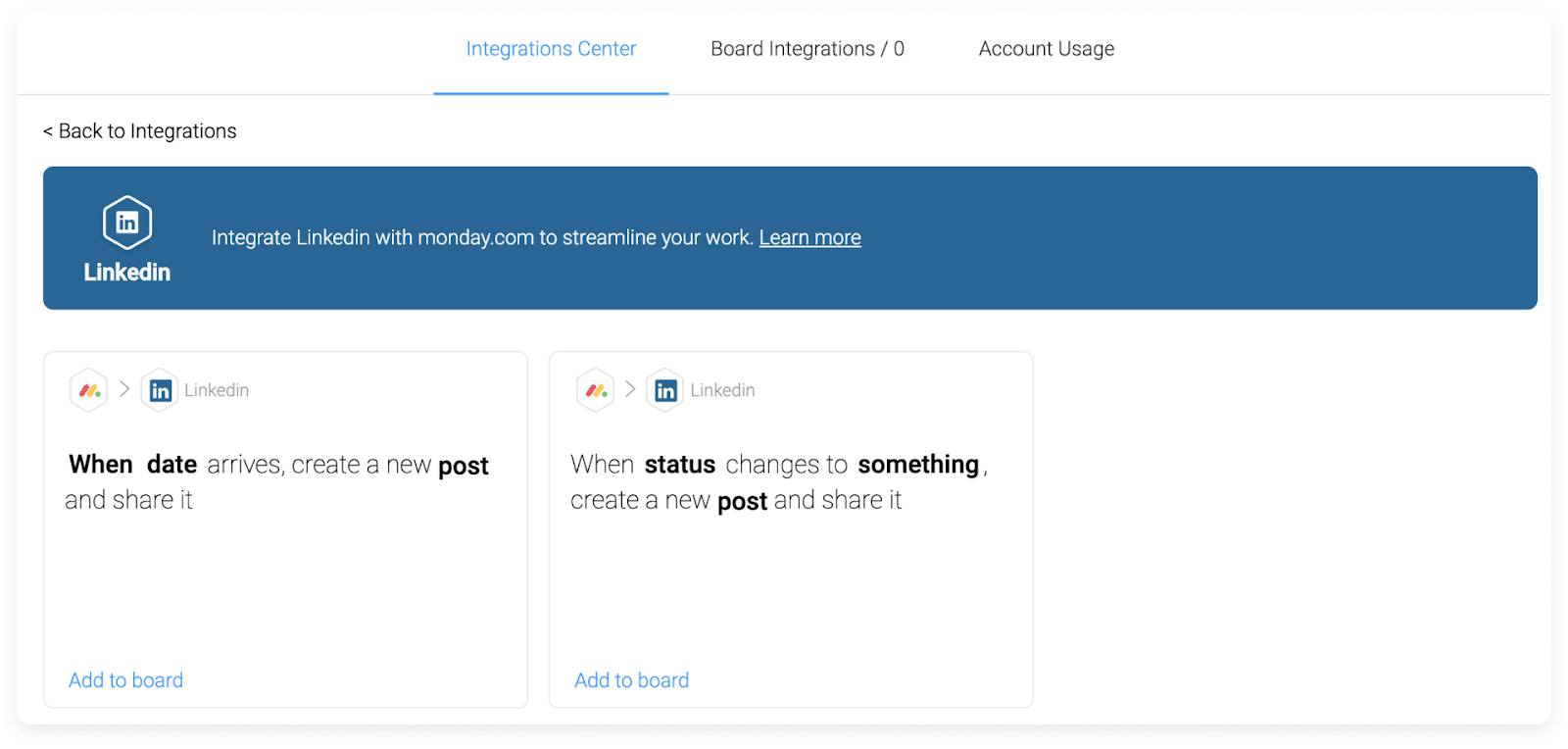
Not only can you integrate with LinkedIn directly, but you can also integrate with Facebook Pages, Instagram, and Twitter through Zapier.
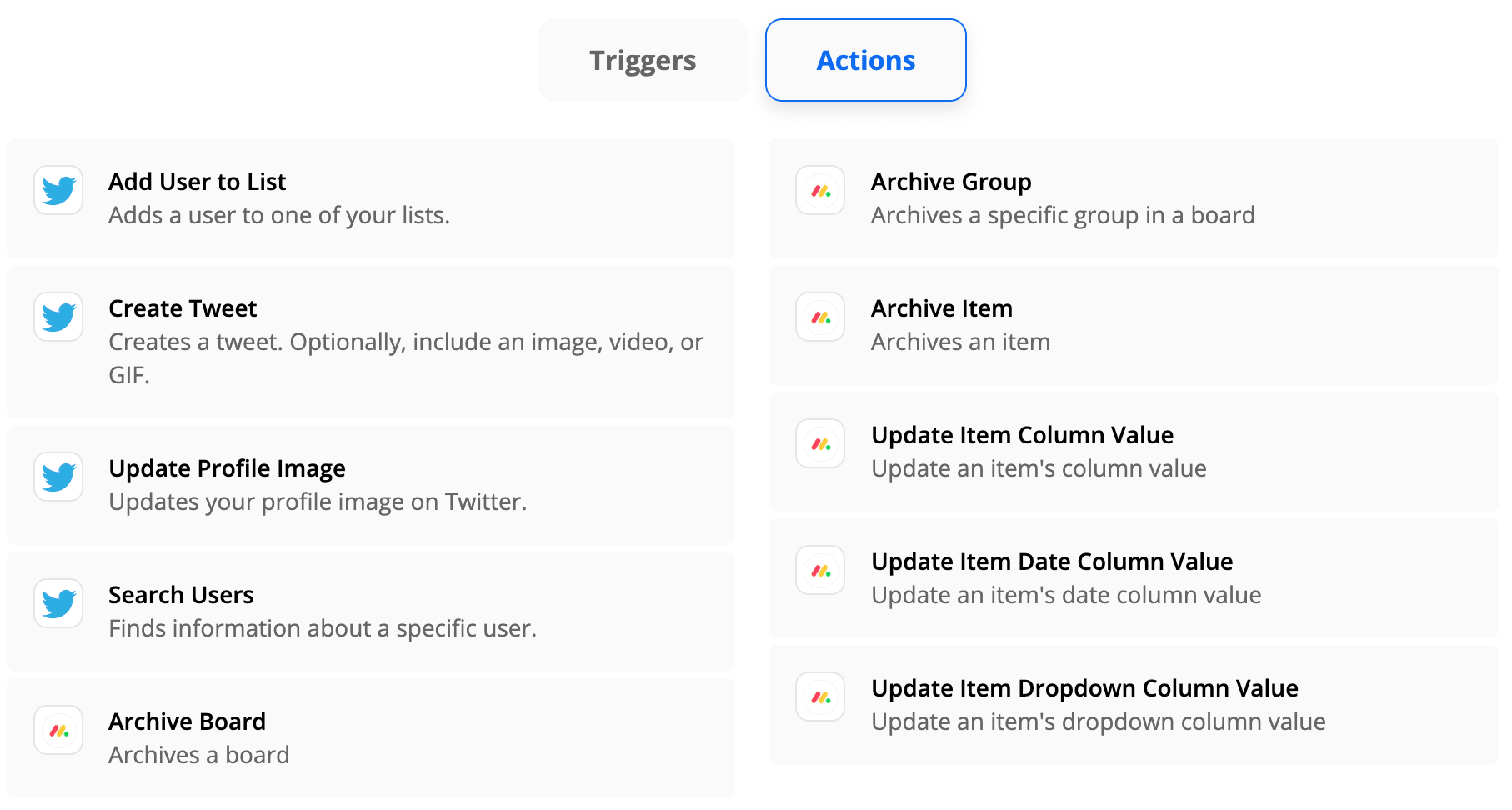
If you’re already working with a social media post scheduler like Buffer or Hootsuite, you can also integrate this with monday.com through Zapier.
Start scheduling your social posts effectively
Social media scheduling gives you freedom. No more posting hand-to-mouth, worried where your next tweet or Facebook status will come from.
This effective style of social scheduling gives you the breathing space to think about which social media campaigns will work. You can then design them to a high standard without feeling rushed.
Not only that, but social media scheduling allows you to target your audience at times of high engagement, rather than simply posting when staff have a spare moment in the day.
If you want to build a high-quality social media schedule that keeps everyone on the same page, you’ll need a dynamic scheduling tool that helps you stay on top of progress.
monday.com’s Work OS makes it easy to build all the social media management tools you’ll need.
Don’t believe us? Try the 14-day trial for free.


